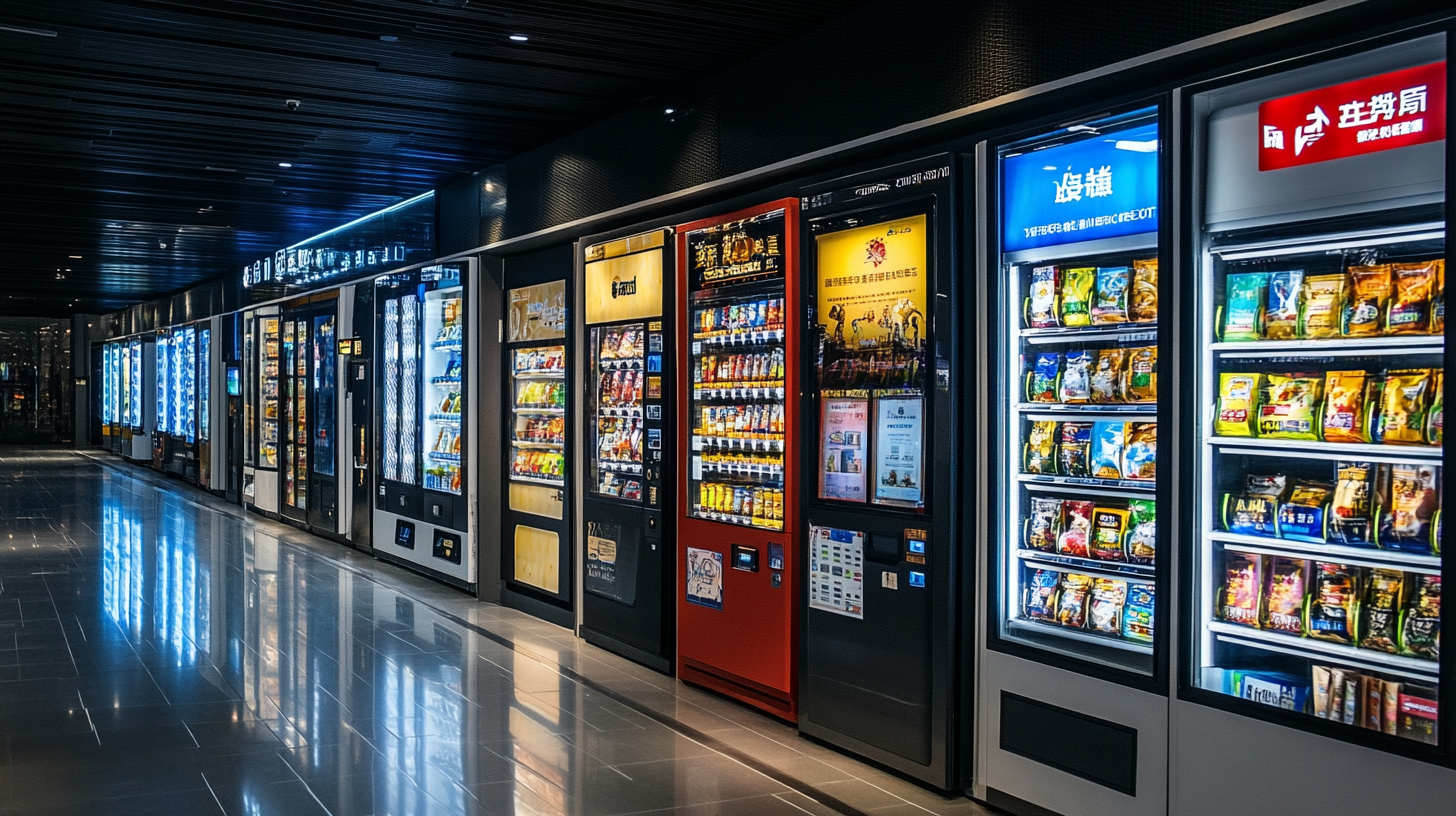Revolutionizing Customer Experience: The After-Sales Benefits and Maintenance Cost of Innovative Vending Machines
You know, in our fast-paced world today, businesses are always on the lookout for ways to improve customer experience and make their operations smoother. One area where we’ve really seen some exciting changes is in the vending machine industry. These new and innovative vending machines are seriously changing the game for how consumers engage with products. They’re not just about grabbing a quick snack; they also offer a really cool post-purchase experience that adds value to what customers go through. With all this fancy tech, businesses can provide support and services right when customers need them, which helps build loyalty and satisfaction.
But it’s not just about making a sale anymore; these machines are shifting how companies think about customer engagement even after the cash is handed over. By including support features after the sale and cutting down on maintenance costs, innovative vending machines are shaking things up in retail. So, in this blog, we’re going to dive into all the awesome benefits these machines bring, like how they boost customer experience while also giving businesses the smart tools they need to thrive in a competitive market.

Impact of Innovative Vending Machines on Customer Satisfaction and Retention Rates
Innovative vending machines are reshaping the retail landscape, with a focus on enhancing customer satisfaction and retention rates. These machines, equipped with cutting-edge technology, offer a seamless shopping experience that aligns with the fast-paced lives of modern consumers. Features such as contactless payment, real-time inventory tracking, and personalized recommendations based on user preferences not only streamline transactions but also foster a sense of convenience and trust. As a result, shoppers are more likely to return, knowing they can expect efficiency and reliability every time they use these machines. Moreover, the design and functionality of these vending machines contribute significantly to customer engagement. Interactive displays can provide detailed product information, promotions, or even entertainment, making the purchasing experience more enjoyable. This level of interaction helps in creating a memorable experience, encouraging customers to choose innovative vending machines over traditional options. Such engaging encounters not only satisfy immediate needs but also build brand loyalty, ultimately affecting retention rates positively. The integration of innovative technology in vending machines also allows for ongoing customer feedback, which is crucial for continuous improvement. Operators can analyze purchase patterns and customer preferences to adapt offerings, ensuring that the machines meet the evolving demands of the market. By prioritizing customer feedback, these machines enhance overall satisfaction and create a more personalized experience, which is instrumental in driving repeat business and ensuring a steady flow of customers.

Cost-Benefit Analysis: Understanding Maintenance Costs vs. Revenue Generation
You know, innovative vending machines are really shaking things up when it comes to customer experiences. At the same time, they're also hitting those maintenance costs and revenue figures. I recently came across a report that predicts the global vending machine market is gonna hit a whopping $25 billion by 2025! It really shows how businesses are leaning towards automated solutions that not only make life easier for consumers but also help them cut down on operational costs. With such significant growth happening, it’s super important for companies to do a thorough cost-benefit analysis. They really need to get a grip on how much it’ll cost to maintain these machines versus what they can earn from them.
When rolling out these high-tech vending options, solid project management strategies are pretty much a must. Whether they go with cloud-based systems or stick to on-site setups, there’s a ton to consider. Using some smart risk management techniques can really help them dodge potential hiccups during the rollout. Plus, having a well-organized timeline can keep installations on track so that businesses can really make the most of their investments.
And let’s not forget about the different phases these machines go through during construction—everything from prebuilding to those post-structural assessments. Companies really have to think about the design of each unit. For instance, bringing in real-time data analytics can be a game changer for maintenance schedules, which, in turn, can reduce downtime and boost cost efficiency. Also, the focus on whether these machines go in residential or commercial spots really matters since each setting presents its own unique set of challenges and revenue possibilities.
As industry folks are saying, using generative AI can provide insights for predictive maintenance, which is pretty neat. It’s like it could completely flip the script on how we think about vending machine operations and keeping customers engaged!

Real-Time Data Analytics: Enhancing After-Sales Support and Customer Insights
In today's fast-paced retail environment, real-time data analytics has emerged as a transformative force that significantly enhances after-sales support and customer insights. By harnessing cutting-edge technologies, businesses can instantly analyze multiple dimensions of customer behavior, preferences, and emotions. This capability allows companies to make informed decisions on-the-fly, thereby improving the overall customer experience.
The integration of real-time data analytics into after-sales services not only increases operational efficiency but also fosters deeper customer relationships. For instance, companies can proactively address customer concerns, personalize service offerings, and anticipate needs based on the real-time analysis of trends and patterns. By leveraging these insights, businesses can build loyalty and drive repeat sales, creating a competitive edge in the marketplace.
Moreover, artificial intelligence plays a pivotal role in this landscape, automating data processing and providing intelligent insights that were previously unattainable. This synergy between real-time analytics and AI empowers businesses to optimize their after-sales strategies, ultimately leading to a more satisfied and engaged customer base. As the global streaming analytics market continues to grow, embracing these innovations will be crucial for companies aiming to revolutionize their customer experience and maintain a relevant presence in the evolving retail sector.

Sustainability in Vending Machines: Reducing Waste and Lowering Operational Costs
Innovative vending machines are not just about providing convenience; they are also contributing significantly to sustainability efforts. Traditional vending machines often lead to excessive waste through outdated technologies and a lack of recycling options. However, modern designs incorporate features such as eco-friendly materials and energy-efficient components, reducing their overall environmental footprint. By utilizing biodegradable packaging and reducing single-use plastics, these machines are playing a critical role in minimizing waste.
Additionally, sustainability in vending machines translates to lower operational costs. Smart inventory management systems ensure that products are stocked efficiently, reducing spoilage and unsold items. These systems use data analytics to track consumer preferences and sales trends, allowing operators to make informed decisions about restocking and product offerings. As a result, vending machine operators can save significantly on both product costs and waste disposal fees.
Moreover, many innovative vending machines are equipped with features that promote recycling, such as built-in bin systems that encourage users to dispose of packaging responsibly. This not only helps in creating a cleaner environment but also fosters a culture of sustainability among consumers. By prioritizing sustainability, vending machines are not only revolutionizing customer experience but also paving the way for a more eco-conscious future.
Case Studies: Successful Implementations of Innovative Vending Solutions across Industries
Innovative vending machines have emerged as a transformative force across various industries, providing businesses with new avenues for enhancing customer experiences. One remarkable implementation can be seen in the food industry, where a leading health food brand introduced smart vending machines equipped with touchless purchasing technology and nutritional information displays. This initiative not only attracted health-conscious consumers but also drove an increase in sales by 30% within the first three months. The easy-to-navigate interface made selections effortless, allowing customers to make informed choices while enjoying a seamless transaction process.
In the retail sector, certain brands have turned to vending machines to expand their market reach in urban areas. One case study highlights a popular beauty brand that deployed vending units stocked with travel-size products in high foot-traffic locations such as airports and shopping malls. This innovative approach not only reduced the overhead costs associated with traditional retail spaces but also enhanced brand visibility. Customer feedback showed a significant appreciation for the convenience of accessing popular products on-the-go, leading to a noticeable uptick in brand loyalty and customer engagement.
Additionally, the technology behind these vending machines allows for real-time data collection and inventory management. An electronics company introduced a system of vending machines that sell accessories and gadgets, integrated with IoT technology to track sales and stock levels dynamically. This capability not only streamlined the maintenance process, reducing costs related to overstock and product waste, but also empowered the company to adapt its offerings based on customer preferences. The success stories of these innovative vending solutions illustrate a promising future for businesses looking to enhance customer experience while optimizing operational costs.